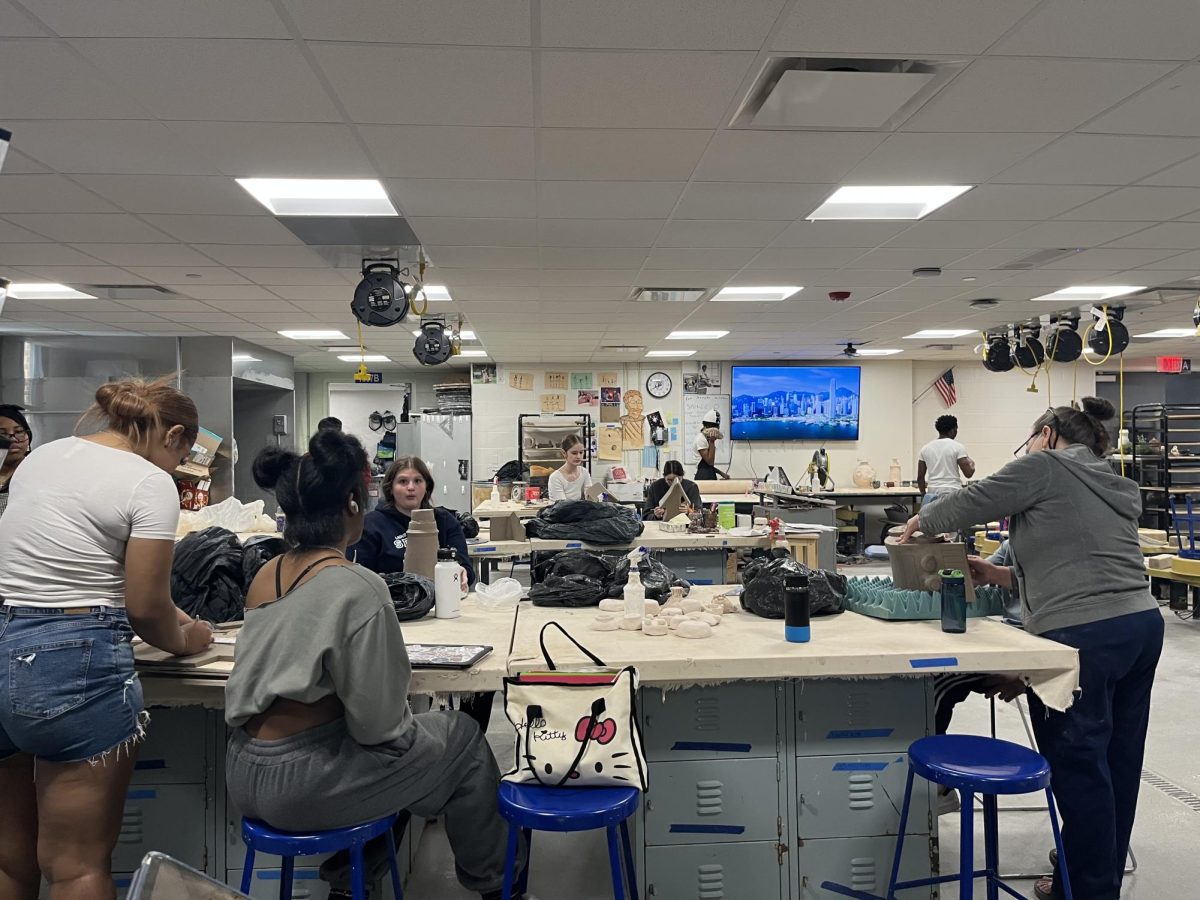One of the most iconic topics in biology is evolution: the process which has defined the natural world and history as we know it today. For freshman biology students, learning about evolution is a hands-on experience.
“We’re putting beans and rice on a carpet and picking them up with pliers and tweezers to see which is easier,” freshman Mimi Tabscott said. “It [represents] natural selection and evolution in the Galapagos.”
The Galapagos Islands, the site of Charles Darwin’s renowned finch study, creates a hypothetical environment for the students to learn about evolution through the lens of finches and their beaks.
“What we’re doing is we’re simulating different environments and food sources available,” biology teacher Molly Mannix said. “So the students are acting as birds: they have different tools for their and in each environment, they’re going to see that one tool works for that environment and in the wild, those birds will survive and reproduce.”
For the students, the lab simulates not just the experience but also the struggle.
“It’s really hard,” Tabscott said. “I can’t imagine doing this in the wild.”
Still, year after year, the lab remains a rewarding experience for students and teachers alike.
“[The students] really like it,” Mannix said. “They like being active, they like the sense of competition they get from the lab. It also allows them to see what scientists are actually seeing out in the world.”









